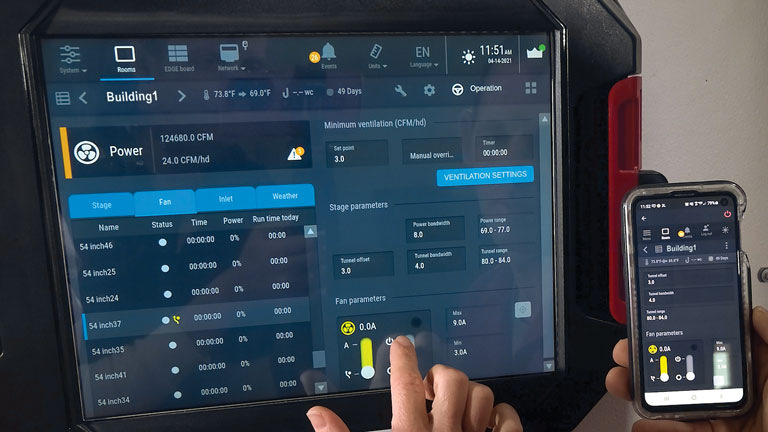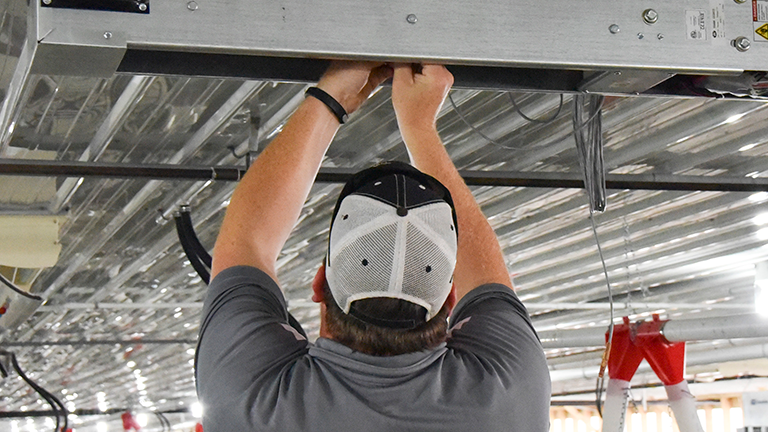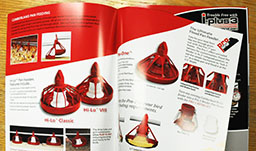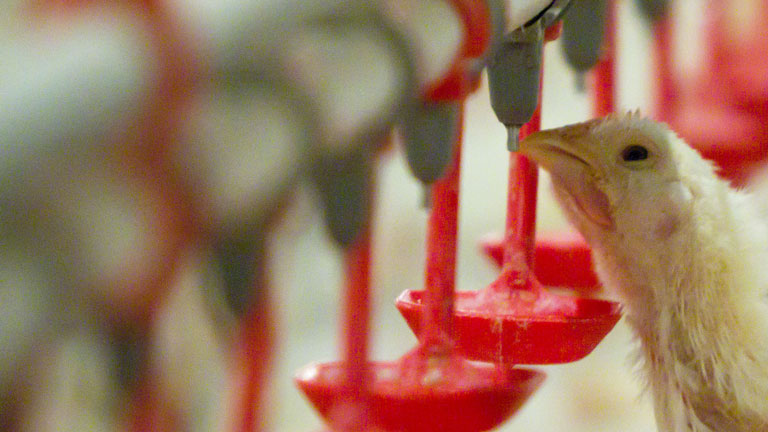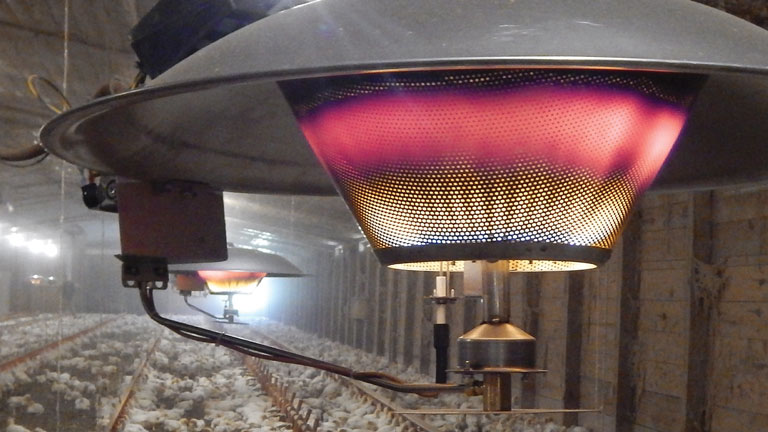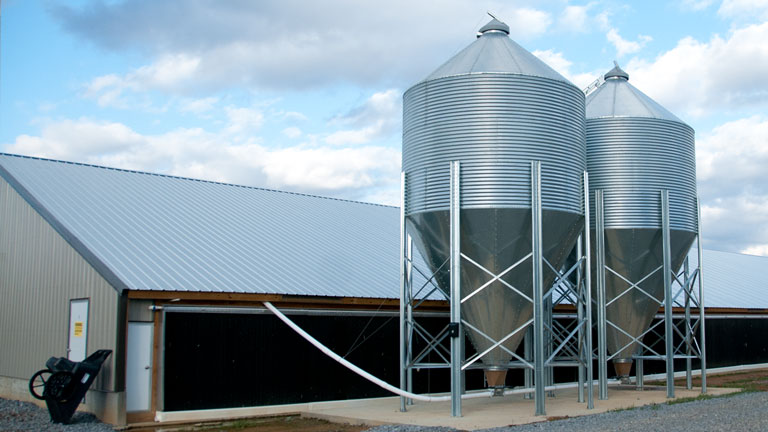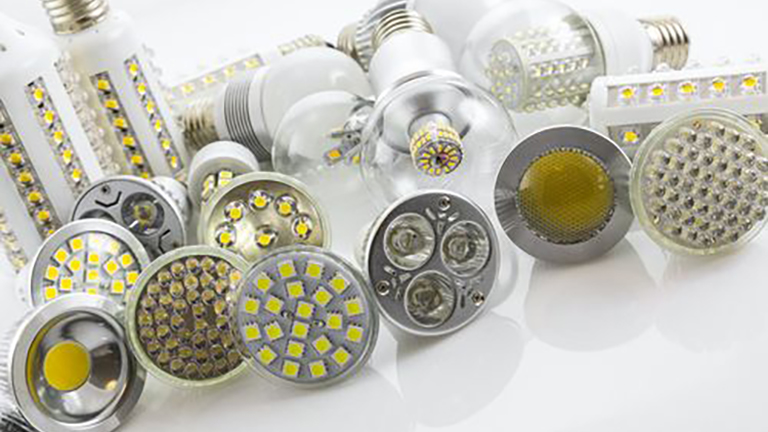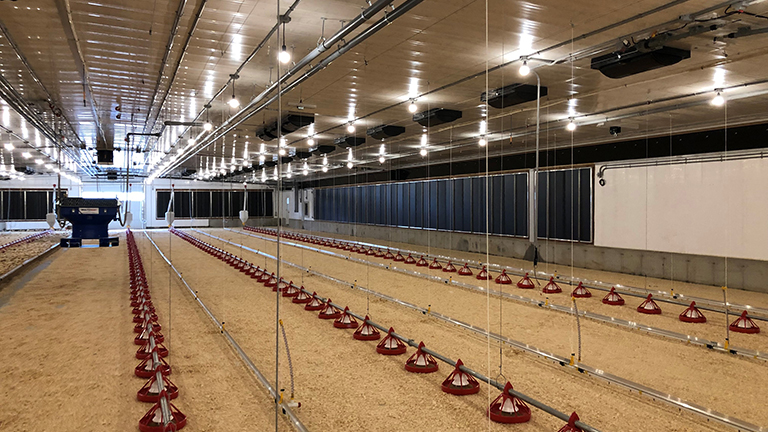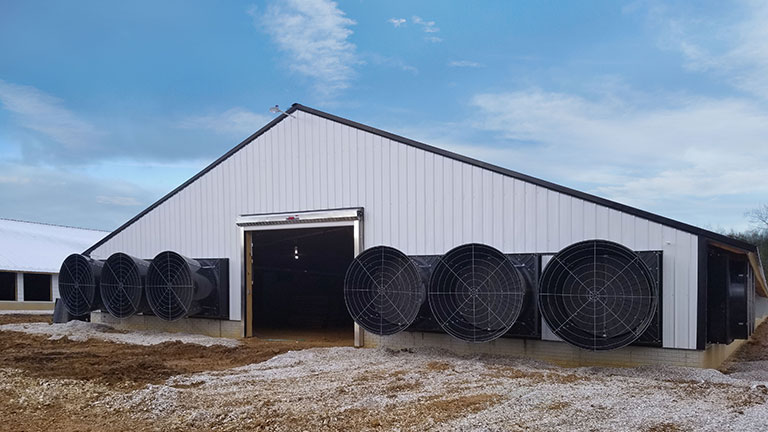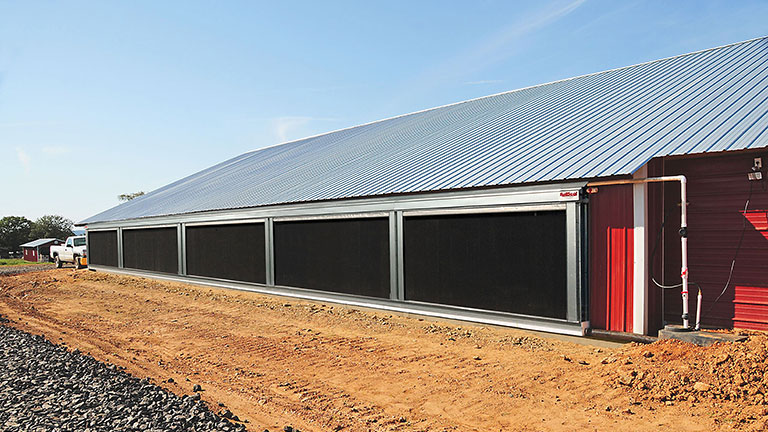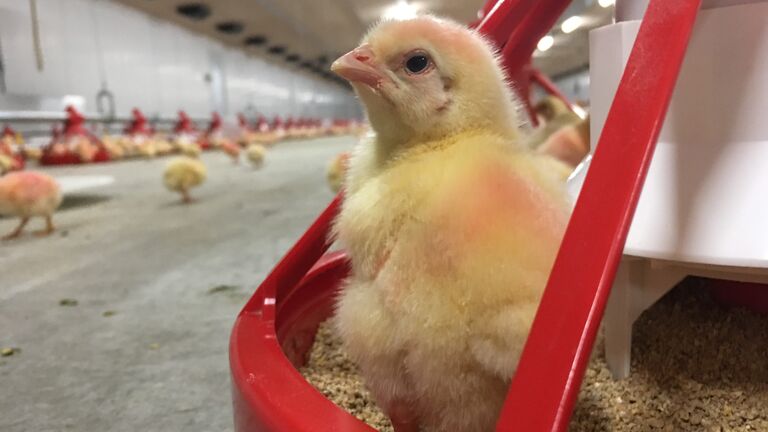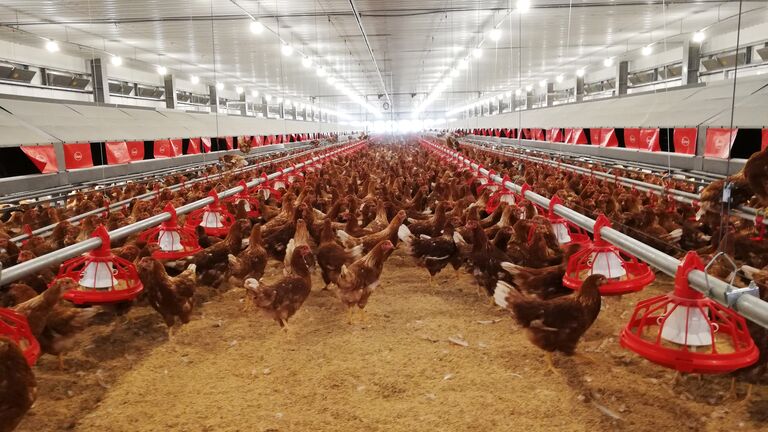With fall and winter months approaching, producers can take steps now to make sure their poultry houses are ready for the return to cooler weather.
Mark Cook, district manager for Cumberland, recommends the following maintenance checks to keep birds healthy and productive.
- Building integrity – Walk around the poultry house exterior to check for any holes, damage or other openings that will allow cold air to enter the building. A sealed exterior is important in maintaining proper ventilation flow inside.
- Cool cells – Drain cool cell reservoirs and fogger lines inside the building and drain outside supply lines to prevent freezing. Remove submersible pumps and store them in a warm place.
- Fans – Clean dust and debris from fans, shutter louvers and any supplemental coverings. Check and replace any worn belts and bearings.
- Heaters – Blow off dust and dirt that may have accumulated on the top of heaters. That can act like insulation, absorbing heat rather than allowing it to radiate into the building. Inspect heaters to ensure they are in proper working order, especially for supplemental heaters that did not run through the summer months.
- Controller – A change of seasons is also a good time to check to see if any software updates are available from your controller manufacturer that will provide improved efficiencies for the operation.
“These are all fairly easy steps producers can take to ensure an optimal poultry house environment for the fall and winter seasons,” Cook said. “Proper maintenance can help avoid costly repairs and maintain high productivity.”

